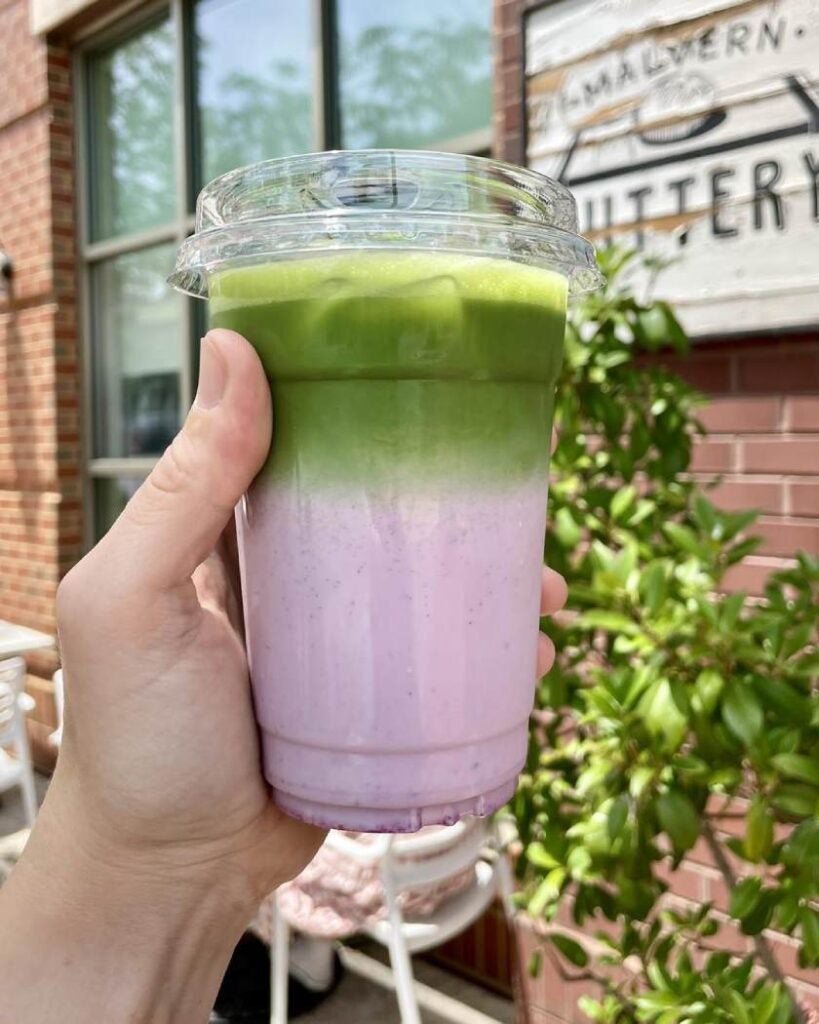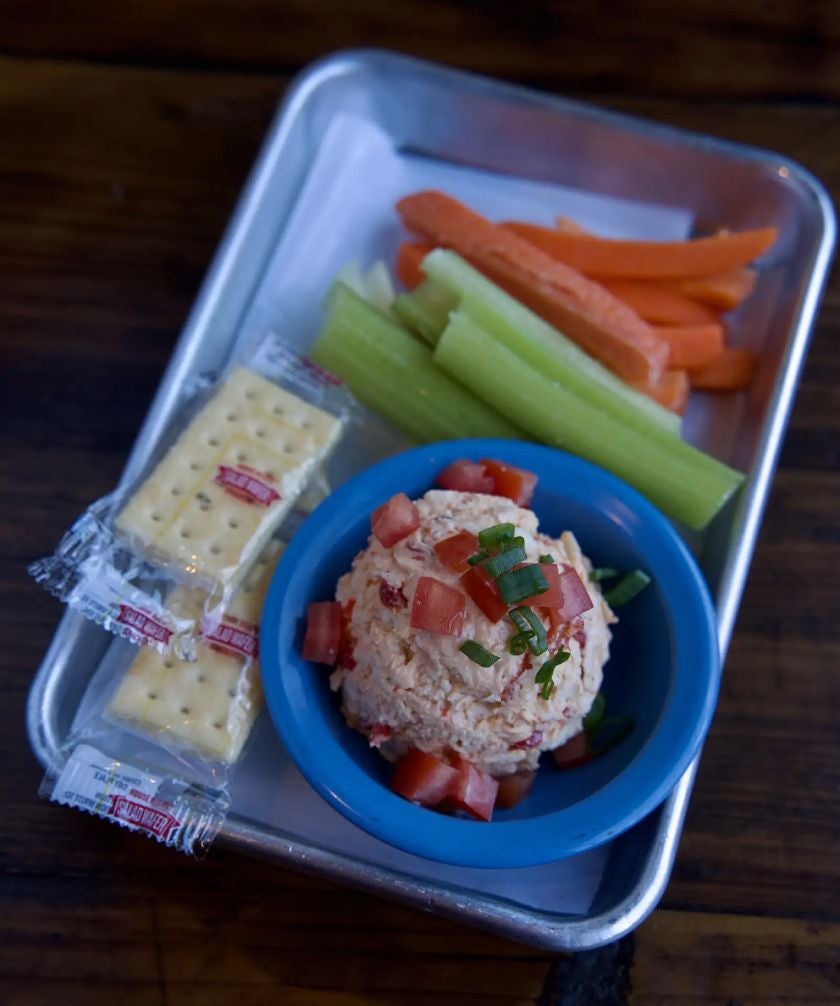Providing a menu that delivers what diners want and expect is key to finding success in the restaurant industry. I scoured the industry, reading numerous reports, surveys, and articles to find the most helpful restaurant menu trends to help you keep your menu fresh. Below are the top 15 menu trends to look out for.
Key Takeaways:
- Menus with a human touch—from hand-drawn elements to hand-lettered menu boards—are popular.
- Online menus should offer creative deals that deliver delicious, quality experiences from your restaurant.
- Creative twists on Caesar salad, tinned fish, and non-alcoholic beverages are trending on menus nationwide.
Menu Design & Development Trends
In general, both menu offerings and menu displays themselves are seeing some changes this year—suggesting that restaurants are getting creative with meeting diners’ evolving preferences and demands.

Made-to-order menus from VistaPrint
Ready to showcase your dishes and entice diners? Let VistaPrint help you design and print menus to fit any restaurant brand. From one-pagers to bi- and tri-fold options, choose a style that works for you, easily customize your design with photos and QR codes, and print batches for 50 or more for as little as $31.20.
1. Hand-drawn Menu Images Add Flair
One exciting menu trend in 2024 is a hand-drawn version of each dish. This artistic style of showcasing key menu items can work for menus that do not change often. A fun, stylish drawing can brighten your menu and make the items you are selling more appealing. Take, for example, the drink menu from Idaho restaurant Amano. Each cocktail is hand-drawn in the style of Lotería, a popular Mexican card game.
This beautiful menu is practically begging to be shared on social media, giving your restaurant some bonus free advertising. It also complements the restaurant concept; “A mano” is Spanish for “by hand.”

2. Menu Boards Remain Popular
Many restaurants rely entirely or partially on menu boards, which come in many different styles—digital screens, backlit photo displays, or magnetic hanging boards. Menu boards surged in popularity during the COVID-19 pandemic when printed menus became vectors for the spread of illness. They continue to be popular for their cost-effectiveness, user-friendliness, eco-consciousness, and design potential.
Magnetic menu boards like these from signage specialists George and Willy cost from $450 to $560 and add a nostalgic design element to your restaurant.

3. On-premise Menus Are Still King
A broader menu trend that is important to note is that dining out still reigns supreme in the eyes of the consumer. According to the Diner Dispatch Survey released by US Foods, 55% of customers prefer dining at restaurants over takeout or delivery options. This number was 43% in 2023, showing an increased appetite for a truly memorable dining experience.
Customers mainly want to dine out because of the social atmosphere a restaurant dining room naturally provides. When I see this data, I see an opportunity for menus that reflect shared plates, communal dining options when possible, and a memorable or experiential service package. A dining experience does not need to be avant-garde or over the top, but it does need to meet an excellent quality standard for in-person dining and draw customers back for more.

4. Online Menus (& Deals) Have Staying Power
One very interesting menu trend I found from a report by Purdue University in September of this year is that 20% of “thrifty” food spenders utilize a food ordering app at least once a day. In the same study, Purdue found that 68% of customers use discount offers or promo codes when ordering food online.
There is an opportunity to combine these two data points to create online promotions that feature high-profit margin menu items. Creating special discounts to appeal to these thrifty online shoppers allows you to create a different experience from your on-premise, experience-based strategy. Target high-margin items with special discounts to capture sales from online consumers.

5. Enhanced Happy Hour
With customers looking for better value from restaurant menus, happy hour has taken center stage. This year saw a shift in large food restaurant groups and how much care they put into the happy hour portion of their business. Furthermore, restaurants are extending or repositioning happy hour to a later time to boost traffic in key, slow-traffic times in the restaurant.

(Source: Emmy Squared)
For example, Emmy Squared, a 26-location restaurant chain, created “Emmy Hour” this past July in order to drive traffic from 9 p.m. to close on Sunday through Thursday. What is regarded as a slow point for the business was repositioned to offer deals for customers looking for a great experience without spending as much money. Repositioning happy hour timetables, enhancing menu options, and offering real value in these menus can drive traffic from financially savvy customers.
6. Low & No-alcohol Beverage Sections Gain Traction
Consumers are shaping different opinions on the traditional, alcoholic-based cocktail. For example, in a recent survey by NCSolutions, 41% of consumers said they were trying to cut back on alcohol consumption. This shift in consumer demand should be a wake-up call for food business operators, as offering exciting and enticing non-alcoholic options can help you turn the sober-curious movement into real-world sales.
When it comes to menu placement, restaurants like Los Angeles restaurant Botanica are simply listing the low and no-alcohol offerings directly on their cocktail lists.

7. Limited-time Offers Expand Menus (Temporarily)
Technomic’s 2024 State of the Menu report found that limited-time offers (LTOs) grew by more than 52% between 2020 and 2023. As on-premise menus shortened overall to focus on core offerings, LTOs allowed restaurants to experiment with new menu items or even whole new day parts. By communicating to customers that these items or changes are only for a limited time, you give your restaurant breathing room to try something new without committing to doing it forever.Seasonal drink specials—like these from Vermont’s Mon Vert Cafe—are a popular type of limited-time offer.

LTOs can help you drive profit by featuring a low-cost menu item you normally wouldn’t use or giving younger cooks a shot at getting a dish on the menu. LTOs also drive customer desires to try the latest items or feed their love of nostalgic flavors.
New Menu Trends for Food Items
In addition to general menu formats and menu categories, there are some trends in the menu items that appear on restaurant menus nationwide. Here are some of the biggest menu movers in the past year.
8. Caesar Salads Are Everywhere
US diners have loved the humble Caesar salad since Caesar Cardini first dished it up in his Italian restaurant in Tijuana, Mexico. So, where does a Caesar salad belong? On an American, Mexican, or Italian restaurant menu? The answer is all of the above. In 2024, Caesar salads achieved enormous menu penetration, appearing on menus of every restaurant type, from Mexican and Italian to Thai, vegan, and Southern cuisine.

As reported by the NY Times, these salads can charge premium prices. The average menu price of all the Caesar salads the Times team saw was $15.42, with prices ranging from $12 to $22. So, if you have an idea for a riff on a Caesar salad, now is the time to give it a try.
9. Established Plant-based Options
Plant-based doesn’t always mean no meat; the term can refer to dishes that simply give plant-derived foods center stage and reserve animal products for supporting roles. Once a niche menu offering, plant-based foods have now established themselves as core menu items for restaurants, from quick service to fine dining. Michelin-starred New York restaurant Eleven Madison Park famously shifted their menu to plant-based in 2021.

A recent trend Mintel found in their America Eats Consumer Report 2024 is that 22% of US consumers report eating little to no meat in their diet. The goal for many of these diners is sustainability and health, and they see meat reduction or elimination as a key way to reach this goal. Having plant-based menu items that are delicious and crave-able is key to attracting this growing segment of the dining public. By avoiding meat for some menu items, you open up the respective customer base you are then able to service.
10. High-protein Menu Items Gain Popularity
As eating trends evolve, one key aspect of meals that consumers are looking for is protein-focused meals. According to a frequently cited Nielsen study, 55% of US households say high protein is important to their shopping decisions. This coincides with the growth of the fat- and protein-focused, low-carbohydrate ketogenic diet, which is projected to grow by $4.75 billion over the next four years, according to Technavio. Nearly 40% of that growth will come from North American consumers.
This trend also continues in the restaurant space, where diners always seek high-protein options. There are viral trends of influencers going to popular chain restaurants and building out protein-heavy meals, so offering options that can shout out their high protein count could be a win. Protein-seeking customers tend to look for 20g to 30g of protein per serving. Offering high-protein meal types—especially in quick service—can be the reason a customer relies on your restaurant over others.
11. Tinned Fish Goes Viral
A trend that blew up in 2022 and 2023 was the popularity of tinned fish, also called conservas. During this period, tinned fish sales grew to $2.7 billion (up from $2.3 billion in 2018), and the popularity of these products is expected to grow even more.
Tinned fish harkens back to a different era of dining and brings both elegance and a new flavor that many consumers may not have experienced. Conservas have long been popular in Spain and other European countries but saw a surge in US popularity when consumers were looking for shelf-stable proteins to stock their pantries during the COVID-19 pandemic.
The tinned fish selection is extensive at Chicago’s Queen Mary Tavern.

Tinned fish stores well, often only needs simple preparations, and can be served directly in its packaging. These elements make tinned fish an excellent choice for zero-waste restaurant models. Consider adding a tinned fish item to your menu as an appetizer or part of a limited-time offer. The sales might just surprise you.
12. ‘Swicy’
Don’t worry; the word above really does exist. The term pairs “sweet” and “spicy” together to make the word “swicy”, a term used by major brands to describe dishes that highlight these flavors. The most ubiquitous form of swicy is the “hot honey” flavor that infuses honey with chili flakes. You’ll see hot honey on everything from Brussels sprouts to chicken wings to pizza. In June of this year, CNN called “swicy” the “hottest trend in food, ” citing that 11% of 18- to 34-year-olds enjoy bold and unexpected flavors.
Shake Shack ran a “swicy” campaign this summer to appeal to a younger eating audience.

Food brands and restaurant chains have all capitalized on this new term, understanding that this bold flavor combination captures a younger dining audience. By highlighting one or two food and drink items on your menu in this category, you could reach a new customer base that seeks out swicy foods.
13. Matcha Is a Sure Thing
A recent report shared by Cash App looked at trending terms for peer-to-peer transactions through their platform. For one key finding, the report showed the increased popularity in “matcha,” citing the word increased by 28% in money transfer verbiage. This data indicates that matcha is not only a popular menu item but is popular with a younger generation of consumers.
Matcha lattes, like this iced lavender matcha latte from Philadelphia’s Malvern Buttery, are increasingly popular with Gen Z consumers.

With Gen Z and other generations around this age range more likely to be using an app like Cash App, it is safe to assume that having matcha on your menu in some way could be a massive win. Whether matcha is introduced as a beverage or as part of a menu item, adding it can attract consumers who love this drink.
14. Croissants Get Creative
Yelp’s 2024 State of the Restaurant report identified the croissant as both a popular stand-alone menu item and a foundational item for other menu options. Some menu items Yelp saw an increased search for were “flat croissant” and “pizza croissant.” Yelp saw a search increase percentage of 5,411% for flat croissants alone.
The flat croissant began as an innovative way to repurpose day-old croissants, turning a waste item into profit. The trend went viral on social media, and now the flat croissant is so popular that Bay Area bakery Alexander’s Patisserie limits online orders to one flat croissant per order (customers must purchase in person if they want more).

The flat croissant is an innovative individual menu item with the potential for endless flavor variations. It can also be incorporated into other dishes. Alexander’s uses plain flat croissants as the base for two of its popular brunch menu items, topping the disc with mashed avocado, eggs, and seasonal vegetables.
15. Global Flavors Expand
American diners are increasingly excited about exploring global flavors. At the 2024 National Restaurant Association Show, Technomic “Food Futurist” Liz Moskow presented data showing that 48% of Gen Zers, 59% of millennials, and 46% of Gen Xers are more likely to try new flavors than they were just three years ago.
Moskow specifically mentioned flavors like fiery Thai crying tiger sauce, Mexican chili seasoning tajin, and ingredients like fermented fish, miso, years, and natto. On the beverage side, Moskow highlighted Vin Jaune, an aged white wine from the Jura region of France that is similar to a Spanish fino sherry.
Jacksonville, Florida’s 1937 Spirits and Eatery spices its popular pimento cheese appetizer with tajin, a Mexican blend of chili powder, salt, and lime.

So, if you’ve been holding back on introducing a new, globally inspired dish for fear that customers wouldn’t connect with it, maybe now is the time to give it a shot. You could combine these more challenging dishes with other restaurant menu trends—for expanded happy hours or limited-time offers—if you’re not ready to replace any of your crowd-pleasing dishes.
FAQs
Menu trends are always evolving, just as customers’ preferences do. It is important to stay up to date on current menu trends, as they can help you grow your restaurant’s sales. Below are the top questions many have about restaurant menu trends and how to utilize and capitalize on them in a restaurant setting.
Last Bite
As you can see, there are a wide variety of factors that determine what is popular for customers when they choose to dine out. A personalized focus on the in-person dining experience through your menu will help your business stand out. Bold flavor combinations and highlighting key items such as matcha or croissants can help capture virality in a social-media-driven world. Finally, having options for different lifestyles and preferences is key to the best success in 2025 regarding your restaurant’s menu.
ALSO READ



